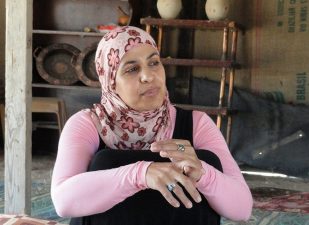 Commuter traffic and wasteful buildings are Tel Aviv’s biggest polluting culprits, according to City Architect of Tel Aviv-Jaffa, Yoav David.
Commuter traffic and wasteful buildings are Tel Aviv’s biggest polluting culprits, according to City Architect of Tel Aviv-Jaffa, Yoav David.
As one of the events surrounding the EUREKA Israel Chairmanship this week, Deputy Mayor of Tel Aviv, Asaf Zamir, and Tel Aviv City Architect Yoav David spoke to visiting European representatives about the city’s efforts to reach a higher level of urban sustainability. Since the European EUREKA network is planning on launching a “Clean-Tech Initiative” campaign this coming February and it is the subject of much discussion during the representatives’ visit in Israel, the lecture served to illustrate another aspect of striving towards sustainability.
The representatives, mostly National Project Coordinators (NPCs) of the EUREKA network convening after their first day of meetings, were first greeted by Deputy Mayor of Tel Aviv Asaf Zamir, who had just returned to Israel from a sustainable development conference in Beijing. He stated that beyond being the nation’s first “Hebrew city”, and unique in its liberality, size, and pluralism, Tel Aviv is a “city devoted to sustainable development.”
Private Car Orientation A Big Part of Tel Aviv’s Problem
Zamir then introduced Yoav David, who began his lecture with the foundation myth of the city of Tel Aviv on the empty shores of the Mediterranean. Interestingly, David said that even though Tel Aviv is a fairly young city (it celebrated its 100th anniversary last year), many of its sustainability issues relate to the city’s early planning. Tel Aviv was always planned as private car oriented, which makes the creation of public transportation difficult in some parts of the city.
Public transportation is a sensitive issue for Tel Aviv, and a problem that needs to be resolved if it is going to improve its urban sustainability. Over 500,000 cars now enter Tel Aviv daily, 1 out of every 6 Israelis works in Tel Aviv, and 35% of national train trips are either going in or out of Tel Aviv. (Add to these statistics the fact that Tel Aviv’s long-term plan for a light rail recently fell through and the public transportation issue really starts to look like a mess.)
Green Building Codes
As much as the absence of a good public transportation system within Tel Aviv contributes to the city’s greenhouse gas emissions, though, David said that wasteful buildings were an even bigger problem.
In 1992 during the UN Conference on Environment and Development, the Tel Aviv Municipality decided that it would reduce greenhouse gas emissions by 20% by the year 2020. As part of this goal, David and his colleagues are working towards having every building in the city meet a green code.
The code itself is not fully drafted yet (David claimed that it was in its last stages of completion). But David boasted that the Bezaron business district already implements green building standards and that the city plans to build new schools according to green standards. (One could ask whether the construction of new “green” buildings is actually an eco-friendly endeavor and whether it may not be more worthwhile to convert existing buildings, but the lecture unfortunately had no Q&A session.)
Improvement of Pedestrian and Cycling Conditions
Finally, David said that the city is working on improving pedestrian and cycling conditions, aiming to put cycling paths on every major street in the city. To make walking and cycling more comfortable (especially during the humid summer months), the municipality has doubled the city’s number of trees over the last 10 years.
It also hopes to build a pedestrian bridge over the Ayalon highway within the next two years to encourage more foot (and less auto) traffic.
Image via: Ilan’s Photos
Read more about sustainable urban development in Tel Aviv::
Tel-Aviv’s $60 Million Eco-Office Tower A Go
Tel Aviv’s Annual Architectural Weekend Celebrates Urban Green Spaces



